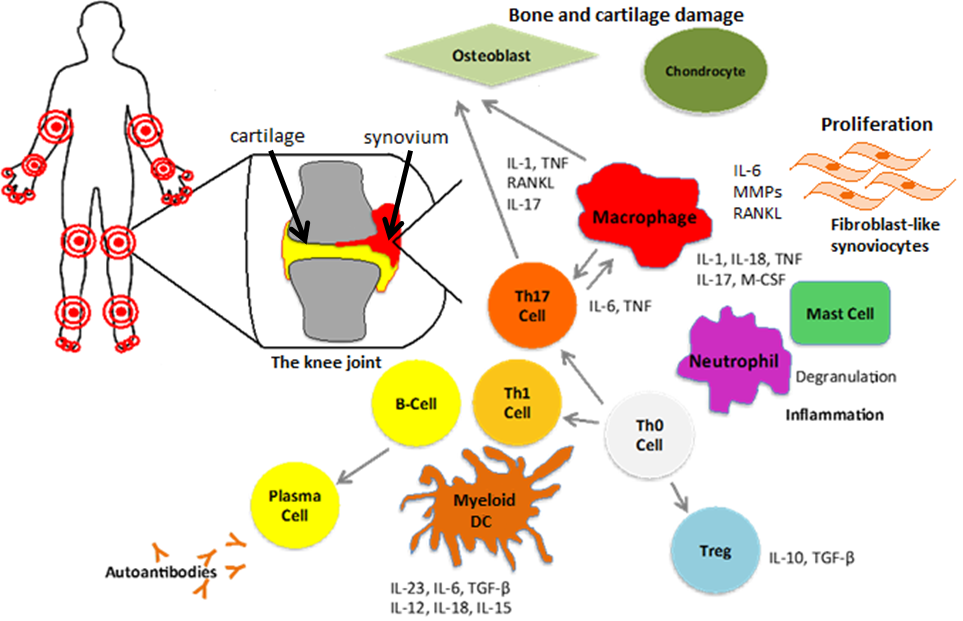BiteSized Immunology: Immune Dysfunction

Rheumatoid Arthritis
Rheumatoid arthritis (RA) is a chronic inflammatory disease affecting the joints. It occurs in 0.5-1% of people in the Western world, predominately women between 30-50 years of age, and has a high familial association. The disease leads to decreased life expectancy and increases morbidity amongst sufferers. Although the aetiology of the disease is unknown, there are a number of environmental and genetic risk factors associated with disease incidence (smoking, obesity, vitamin D deficiency, changes in the microbiota, HLA type, etc.).
Once the disease is triggered, immune cells migrate into the joints where they produce large quantities of immune mediators (cytokines/chemokines) leading to the activation and recruitment of more immune cells into the tissue. For example, antigen-presenting cells interact with T cells to cause production of immune mediators which activate more cells, e.g. T and B cells. B cells produce self-reactive antibodies to immunoglobulin G (IgG) which can be used as diagnostic and prognostic markers. Hyperplasia of the normally thin synovial membrane occurs (shown as the red region of the knee joint in the diagram below), where cells such as fibroblast-like synoviocytes proliferate and augment inflammation. The volume of synovial fluid increases in the narrow joint space, causing swelling and impaired mobility. Inflammation can vary in severity between patients but is chronic and progressive in nature leading to joint damage and bone erosion.
The presence of self-reactive antibodies in RA suggests that the body’s normal self/non-self recognition system is disrupted in the diseased state, but whether this is the cause or simply a consequence of inflammation is unknown. It also appears that the normal regulatory mechanisms used by the body are not sufficient to control the disease. Instead the treatment of RA currently relies on the augmentation and blockade of different aspects of the immune response through drug administration. At present it is not possible to cure RA but induction of remission is achieved in some patients. A stepwise therapeutic regimen is used ranging from non-steroidal anti-inflammatories (NSAIDs), to disease-modifying anti-rheumatic drugs (DMARDs) and finally the specific blockade of certain immune cells or pro-inflammatory mediators using biologics.

© The copyright for this work resides with the BSI
